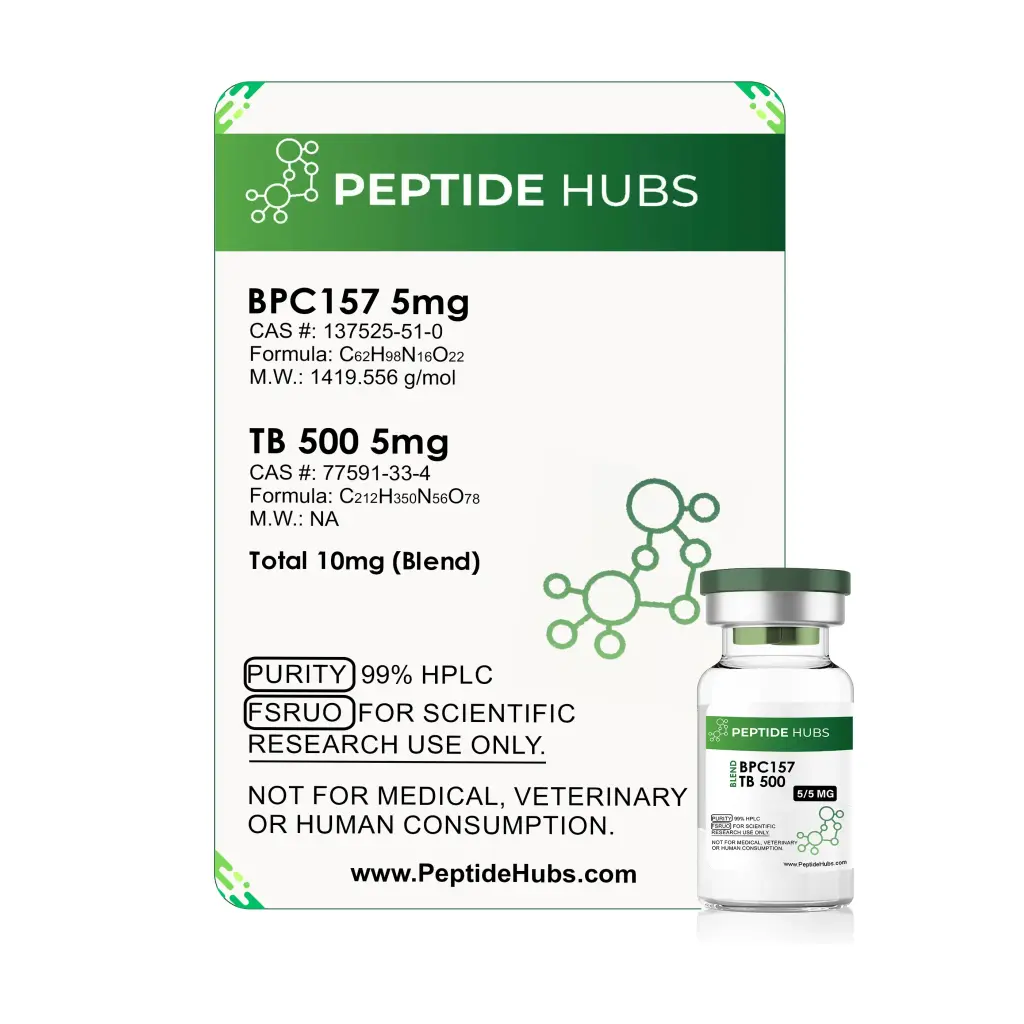
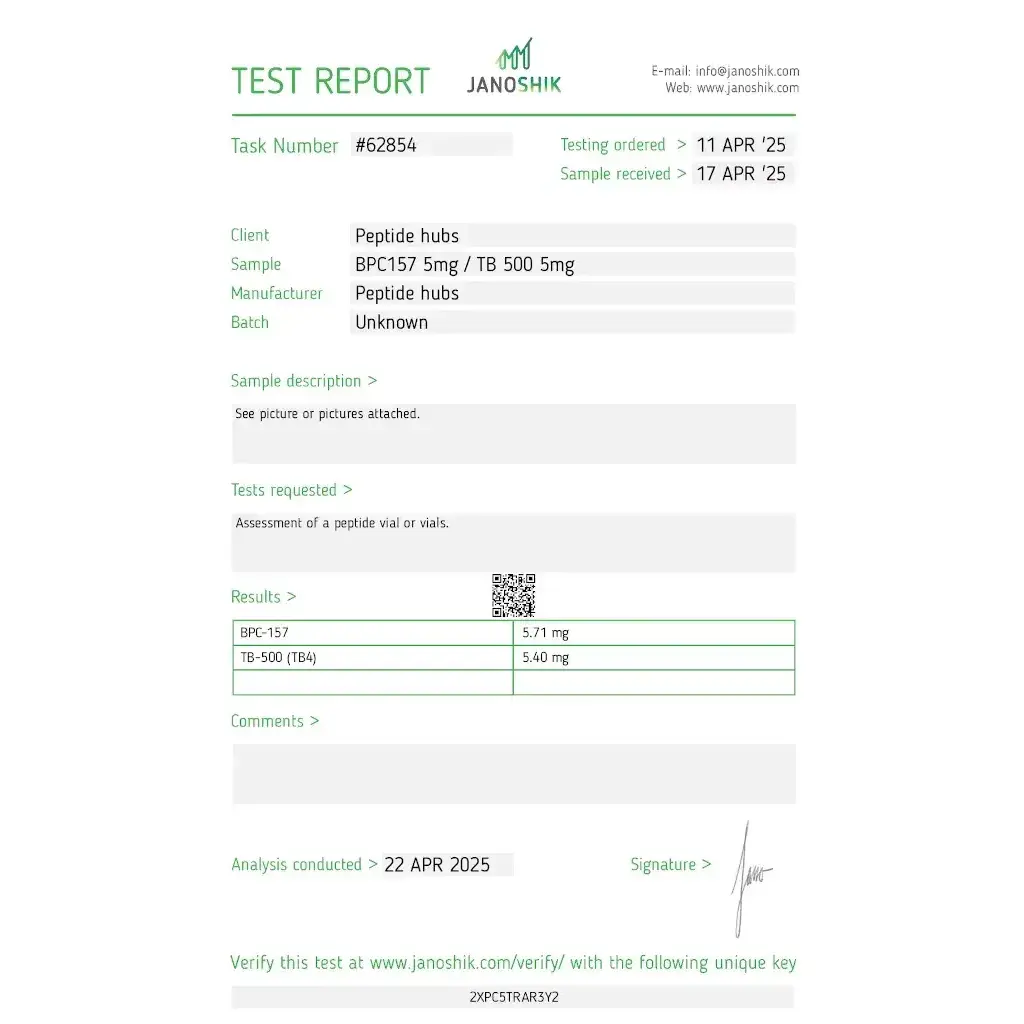
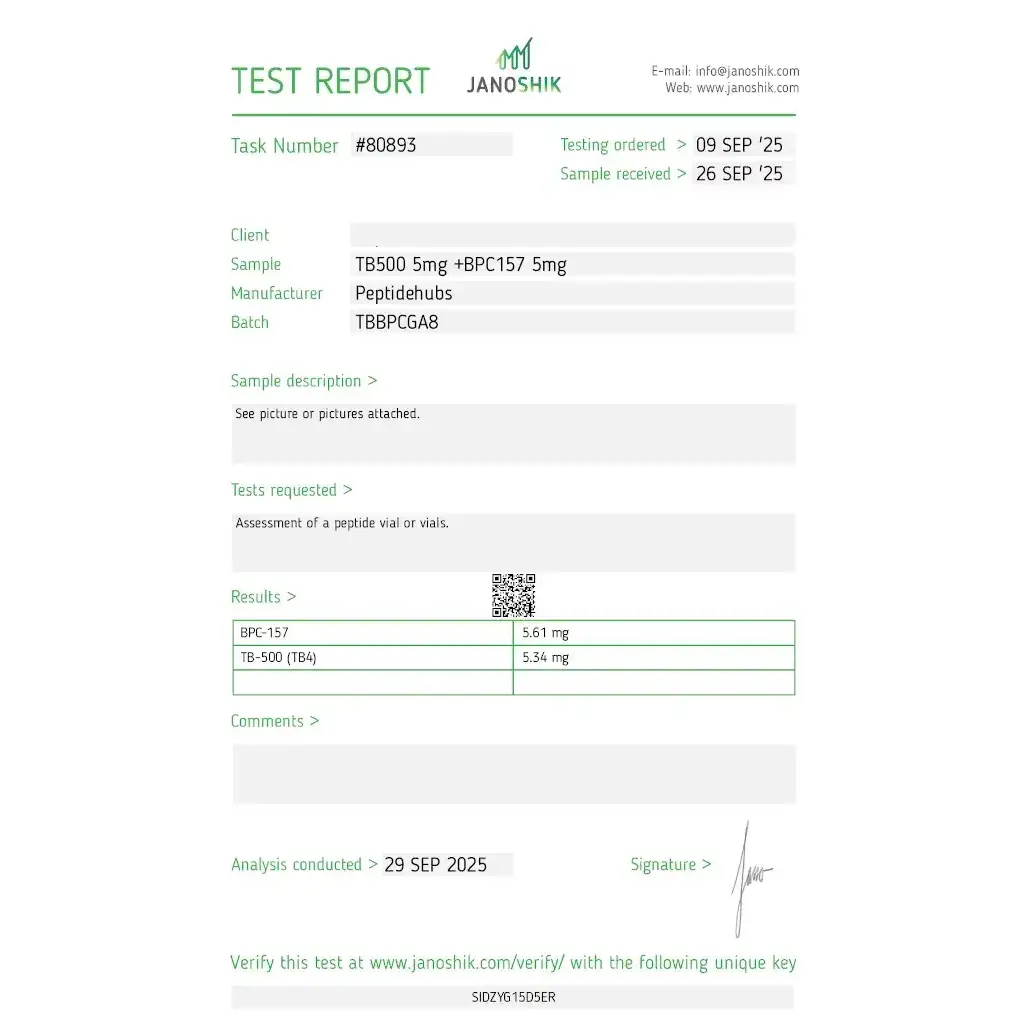



Drug Class: Regenerative Peptide Combo
Active Substance: Thymosin Beta 4 5 mg, Pentadecapeptide (BPC-157) 5 mg
Strength: 10 mg/vial
Form: Lyophilized Powder
Amount: 2 mL Vial
Active Life: 4–6 hours (approx.)
Average Dose: 250–500 mcg of each peptide daily (split or stacked)
Liver Toxicity: None
Aromatization Rate: None
Anabolic Rate: Indirect via cellular repair
Androgenic Rate: None
Manufacturer: Peptide Hubs
Laboratory Test: View Result
Peptide Hubs delivers a potent regenerative solution with this dual formulation of Thymosin Beta 4 (TB 500) and Pentadecapeptide (BPC-157), each at 5 mg per 2 mL vial. Designed for research involving accelerated healing, inflammation reduction, and tissue regeneration, this product is ideal for advanced recovery protocols and injury models.
This dual peptide stack combines two powerful recovery agents. TB 500 is a synthetic version of Thymosin Beta 4, known to support angiogenesis, wound healing, and muscle regeneration. BPC-157, derived from a protein in gastric juice, is a pentadecapeptide studied for its role in tendon and gut healing. Together, they synergize to cover both soft tissue and muscle damage while reducing systemic inflammation.
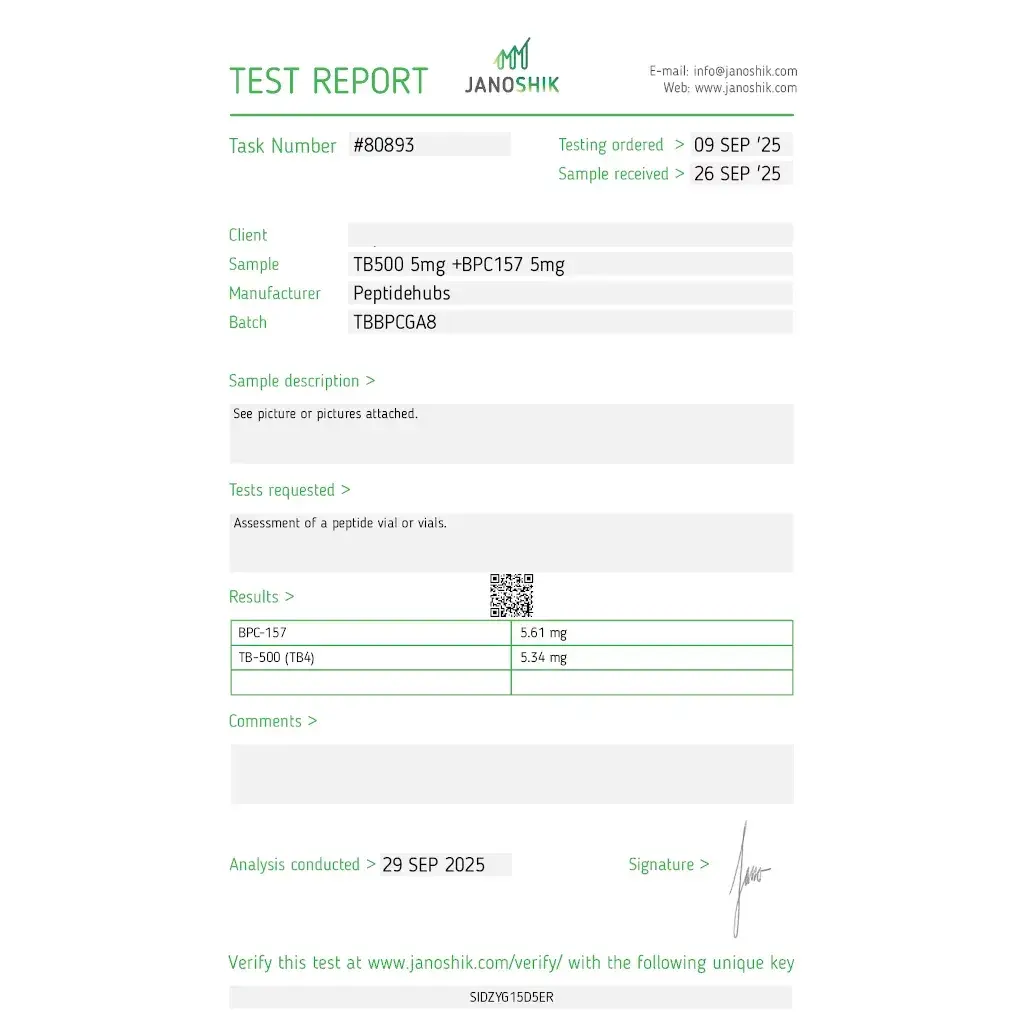
Studies show that these peptides influence cell migration, inflammation modulation, and recovery rates. According to a PubMed study, BPC-157 shows protective effects on ligaments, tendons, and even the gastrointestinal tract. TB 500, meanwhile, has been linked to cardiac repair and corneal regeneration in early animal models.
In experimental scenarios, each peptide is administered in doses ranging from 250–500 mcg daily. Researchers may alternate or combine them, depending on the subject and goal of the study. These peptides are often stacked with Epitalon 50 mg or Semax 5 mg to further enhance recovery and neuroprotective outcomes.
This dual formulation offers convenience and synergy. Instead of purchasing two separate vials, researchers can explore the overlapping pathways of angiogenesis and anti-inflammatory response in a single compound. This simplifies protocols and maximizes tissue repair in trauma-based models.
Researchers looking for a verified source can turn to Peptide Hubs' TB 500 and BPC-157 combo, a lab-tested peptide formula with a strong reputation for consistency and purity. This formulation is carefully manufactured to maintain stability and bioactivity during reconstitution and use.
Yes, many researchers use them together for synergistic effects in soft tissue and muscular regeneration studies.
TB 500 is more systemic and acts on cellular motility and angiogenesis, while BPC-157 has a strong local effect on tendons and gut healing.
No formal human trials exist; these peptides are currently being studied in preclinical or animal models only.
Store vials in a refrigerator at 2–8°C. Once reconstituted with bacteriostatic water, use within 20–30 days.
Please log in to write TB 500/BPC 157 10 mg review.
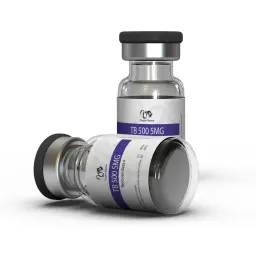
Drug Class: Peptide / Tissue Repair Agent
Active Substance: Thymosin Beta-4
Strength: 5 mg/vial
Form: Lyophilized Powder
Amount: 2 mL Vial
Active Life: 2–3 hours
Average Dose: 2–5 mg per week (divided doses)
Liver Toxicity: None
Aromatization Rate: None
Anabolic Rate: Indirect via tissue regeneration
Androgenic Rate: None
Manufacturer: Dragon Pharma
Laboratory Test: View Result
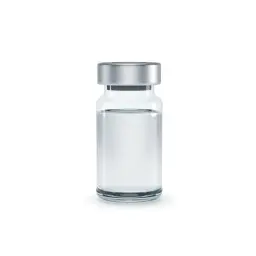
Drug Class: Tissue Regeneration Peptide
Active Substance: Thymosin Beta 4
Strength: 10 mg/vial
Form: Lyophilized Powder
Amount: 2 mL Vial
Active Life: Approx. 2–3 days
Average Dose: 2–5 mg 2–3 times per week
Liver Toxicity: None
Aromatization Rate: None
Anabolic Rate: Moderate (repair-specific)
Androgenic Rate: None
Manufacturer: Stealth Labs
Laboratory Test: View Result
Shipped Without Label!
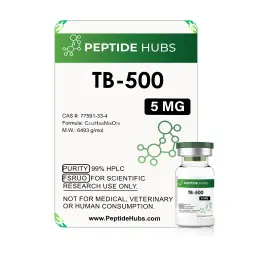
Drug Class: Synthetic Peptide / Repair Factor
Active Substance: Thymosin Beta 4
Strength: 5 mg/vial
Form: Lyophilized Powder
Amount: 2 mL Vial
Active Life: Approx. 2–3 hours
Average Dose: 2–5 mg per week (split into 2–3 doses)
Liver Toxicity: None
Aromatization Rate: None
Anabolic Rate: Indirect (via cellular regeneration)
Androgenic Rate: None
Manufacturer: Peptide Hubs
Laboratory Test: View Result